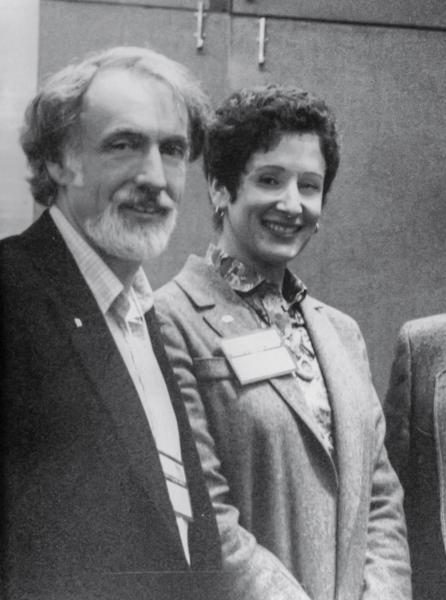The Tamalpais Union High School District (TUHSD) and the district’s teacher union, the Tamalpais Federation of Teachers (TFT), are in the second century of their deeply ceded and multifaceted relationship. In a community of somewhat newly developed affluence and diverse wealth, these opposing groups are naturally placed in difficult situations where they must adapt and compromise. The establishment of a salary schedule and the negotiations that accompany it both embody the nature of their correspondence.
Origins
The labor union movement first expanded on the East Coast in the first half of the 20th century. It did not take long for the movement to nationalize and reach California. From there, the fight for higher wages, better conditions, and reasonable hours attracted Californians in the teaching profession.
According to its official website, the California State Federation of Teachers (CSFT) was first established in 1918 as a local chapter of the larger American Federation of Teachers in Vallejo, Calif. Formed with 800 founding members, the group initially fought to raise educators’ minimum annual salary to $2,000, a triumph in the less developed economy of the 1900s.
For years, the CSFT engaged in a rivalry with another prominent union, the California Teachers Association (CTA), which is now the largest teachers’ union in California. According to the CTA’s website, the two unions initially disagreed on the passing of legislation, each leaning in separate directions when it came to left-and-right-wing policies. This competition led to support leaning more towards the CTA, and a massive decline in CSFT membership followed.
Several years later, according to the Capital Research Center, a database of various policy influencers in the U.S., the CSFT won several important legislative victories in the 1960s in the midst of the Red Scare – a period of great domestic concern over communism – during the Cold War. In these policies, the CSFT began to take more severe left-wing positions, protesting against smear campaigns perpetrated by the House Un-American Activities Committee (HUAC). This approach strongly appealed to many in California and partially led to the union’s membership massively increasing, from 250 members in 1941 to 15,000 in the 1970s. Soon after its name was changed to the California Federation of Teachers (CFT), and it became the second-largest teachers union in the state.
According to the CFT’s official website, the Tamalpais Federation of Teachers (TFT) was established in 1969 as a charter of the CFT. Ten teachers in the TUHSD joined together under Tamalpais High School teacher Ken Anderson. Over the next several decades, the union expanded its membership and became the flagship for teacher representation within the TUHSD.

Permanency in the TUHSD
According to Wes Cedros, the assistant superintendent of human resources in the TUHSD, the union became a close collaborator with the District and, in its early years, worked with them to establish a contract that identified the terms of negotiation over numerous issues. According to the contract published by the TUHSD, the defining elements lie in the outlined salary structure.
“In public education, and I know this to be almost universal to public schools, we have a salary schedule,” Cedros said. “When you’re hired into the district you are placed on the salary schedule according to your education and your years of experience in the teaching profession.”
As described on the TUHSD 24-25 Salary Schedule, the progression of raises works on an annual scale, where teachers are placed into alphabetical categories – B, C, or D – based on their level of education after receiving their California teaching credential (a teacher in group D earns a higher salary than one in group B or C). Within those sections, teachers earn annual raises for up to 12 years, with the exception of group D, where the line is drawn at 15 years.
“When a teacher is hired, [TUHSD] can give up to seven years of credit for previous experience,” Cedros said. “This means they can start on step eight. Because that is set in the contract, it is something that the teachers union could seek to negotiate.”
This means that a teacher coming in from a different district, where they had already been teaching for several years, can start at a stage in the salary schedule that matches their teaching experience.
This aspect of the salary layout is not the one most subject to scrutiny. When a teacher is first hired and plan to join the schedule, they spend two years on a probationary period, at the end of which they are evaluated and either brought on as a permanent employee or let go. If permanently hired, the teacher achieves a status known as permanency, also called tenure, and enters the schedule from stage one the following year with the pre-established salary.
“The process is a student teacher or a temporary probationary teacher is evaluated by their designated administrator [multiple] times during the year. If they are kept on after two years of being observed, they’re given tenure at the beginning of their third year,” head of the Tamalpais High School math department and union member David Wetzel said.
During this two-year probationary period, teachers are placed in a difficult position. Teachers on their probationary period can be fired without cause or explanation, at any given time, according to Cedros. The district does this by serving the teacher a pink slip, informing them that this will be their last year at a school.
“Last year, I was served a pink slip, and it was really disheartening. Even though it is part of the process, it makes you feel icky,” Tam English teacher and union member Tessa Altshuler said. “Although it’s not personal, it makes you feel a little bit devalued, and it forces a sense of desperation to find a new job, and nothing good comes from desperation.”
“It is not fair for teachers to come in, sometimes fresh out of [college], and be put in a situation where they have to assimilate and work with the constant uncertainty of their future at the school,” Tam science teacher and union member Laura Erickson said.
Although discrepancies surrounding the probationary period are significant and seemingly unfair, the district emphasizes that at a certain point, administration has to be realistic about the hiring process and the resources they have available, according to TUHSD Superintendent Tara Taupier. In addition, this aspect is established by the state for public school districts, so it is not open to negotiation between the TFT and the TUHSD.
In contrast to the difficulties surrounding the permanency system, there are clear benefits to being a tenured teacher. Job security and a pre-established salary structure outlined by the TUHSD allow permanent teachers to focus their efforts on teaching without the concerns of uncertainty.
“Having a system where you don’t have to worry about losing your job every year and that allows me to just completely focus on teaching and that gives me academic freedom really is a major perk of the job,” Tam history teacher and union member Jennifer Dolan said.
In contrast, job security, according to Dolan, may lead to teachers putting in less effort in the long run. However, this is a rare issue.
“You always hear that it’s really hard to fire a bad teacher and that’s true. In the case of teacher tenure, sometimes the people who aren’t the best teachers get tenure and get protected by it. But if that happens every once in a while, I think that’s just the price you pay for having a system like this in place,” Dolan said.
Some, like Wetzel, feel that this issue is not caused by tenure, but simply a situation that becomes amplified because of it.
“There are no financial rewards for how well you teach, and there are no financial penalties for how poorly you teach,” Wetzel said. “Teachers don’t become teachers and then four years down the road become [bad] teachers. They were bad when they started and an administrator didn’t notice it before they gave them tenure. That happens.”
This all boils down to the primary national concern surrounding tenure as a concept: its role in evaluating teachers. In a piece published by the National Council on Teacher Equality, which uses policy evaluation and data analysis to identify issues in educational systems, they discuss tenure’s failure to properly evaluate the effectiveness of teachers. In their writings, they propose that a transition to a more thorough evaluation would promote more effort from tenured teachers and increase the value of education for their students. Teachers like Mathew LemMon, a Tam history teacher and union member, share this opinion.
“The evaluation should put a lot more attention on what is being evaluated,” LemMon said. “I could have silent students when being evaluated but still get the boxes checked.”
At the same time, the TUHSD continues to voice that it is difficult to determine a scale in which salary could be based on effectiveness. According to Taupier, in a world of finite resources and complex decision-making, it is difficult to determine what is right versus what is realistic.
“I think not having the opportunity to consider the effectiveness of a teacher is an issue. To change this system, I don’t know if it’s fiscally more responsible, but I think educationally, it would be more sound,” Taupier said. “Still, we have a responsibility to use the resources we have to implement the most effective system, and permanency is still the best option.”
The complexities of various teacher positions: private and public
Things change when entering the sphere of private school teaching outside of the TUHSD. According to the California Department of Education, there are 145 private schools alone in the San Francisco and Marin County areas as of the 2022-2023 school year. These private schools don’t have to submit to various public regulatory laws that control public school funding and salary. For example, private schools don’t incorporate permanency into their faculty agreements.
“At a private school, you could be fired at any time, I would say it’s way more stressful at private schools because they are businesses, so if the business isn’t doing great that year, they would have to cut a lot of the staff,” Tam science teacher and former private school teacher Brock Addison said. “I’ve seen that happen.”
Other private schools around the Bay Area experience similar differences in regulations. Grace Ingersoll, a San Francisco Archdiocesan Federation of Teachers representative and history teacher in her second year at Archbishop Riordan High School in San Francisco, claims private schools have free range to hire teachers without teaching credentials, unlike public schools. Additionally, private schools aren’t required to have salary schedules, unlike their public school counterparts. Ingersoll is in a unique situation, though. Riordan, despite not being required to have a salary schedule, does publicize one, which in part has to do with the union Riordan is a part of.
“I am [in] the only private school union west of like the Mississippi or something close to that,” Ingersoll said.
The union accounts for the six schools in the Archdiocese of San Francisco: Riordan, Convent High School, ICA Cristo Rey Academy, Sacred Heart Cathedral Preparatory, Saint Ignatius College Preparatory, and Stuart Hall High School. Significant advantages arose for Ingersoll when she joined the union. Prior to working at Riordan, she had worked in the diocese of Sacramento in Vallejo where collective bargaining wasn’t available.
“We go into bargaining years and we bargain for the fact that we make $65 for every sub-period whereas at Vallejo I was making $20 every time I subbed,” Ingersoll said.
According to Ingersoll, Riordan requires all contracted teachers to sub eight times a year, but once they meet the threshold, any extra time is duly compensated.
On top of negotiating substitute payments, Ingersoll’s union further used collective power to increase overall pay. Ingersoll currently makes roughly $96,500 annually, but part of the contract negotiated by the union guarantees a four percent bonus each year.
While unions open floodgates towards higher pay, a stressing factor towards the limitations of salary growth for private schools depends on student enrollment.
“The more money you make as a school, the more you can pay your teachers, right, and the more that we can negotiate when we are in a union and go say hey, you’ve made this much money this year, you can obviously pay us,” Ingersoll said.
Ingersoll’s previous school in Vallejo struggled with enrollment, leading to her capping out at $56,000 annually.. Contrastly, a San Francisco Chronicle article reported that one-third of K-12 students attend private schools, which is well above the 10 percent California average.
“There is a lot of competition to be teachers at these private schools in SF or in Tam. And it’s because they treat us fairly and they pay us enough,” Ingersoll said.
The same applies to public schools. According to Wendy Baumgartner, a math teacher at Tam, the more affluent counties with higher property taxes breed higher school budgets, resulting in higher-paid teachers.
“Take Petaluma versus Marin County. We’re barely 20 miles apart and the pay disparity between schools in Petaluma and in Marin are huge,” Baumgartner said.
This comes naturally when considering the scale of Marin’s wealth. The U.S. News and World Report released rankings of the richest counties in America. Marin sits as the sixth richest county as of December 2023. With the median household income being over $140,000, funding to provide adequate teacher pay is attainable, but not necessarily universal.
“I’m not struggling, but it’s, you know, I have no hope of buying a house or anything in this area,” Baumgartner said. “I would have to plan on increasing my commute by a huge amount to be able to afford to live somewhere if I want a house of my own. You know, so that part kind of sucks.”
Altshuler has a unique situation of working two other jobs on top of her teaching career, which she attributes to her annual teaching salary. Still, both Baumgartner and Altshuler do not have to provide for other people. For teachers who do, Baumgartner said “I can’t imagine trying to make a go of it with having children.”
Not all teachers have the same luck finding an affordable place in Marin.
“A lot of people live in Petaluma or even Napa, you know, clear over. A lot of people live in the East Bay and so they’ve got to come over the bridge every day,” Baumgartner said.
The relationship between TFT and the TUHSD
Outside the bounds of permanency and non-negotiable issues, the TFT continues to serve as the primary voice for teacher representation in the TUHSD. According to Erickson having a steady union in place allows teachers to advocate for beneficial change without being manipulated.
Andre Sisneros, a Tam science teacher and one of two Tam TFT site council representatives, voiced strong approval for the correspondence in place between the TFT and the TUHSD. Having worked in different districts before, he feels that this one does properly balances compromise with contention.
“The places I’ve been have had a very wide variety of relationships between the teacher’s union and the administration. Sometimes it can be very contentious. Sometimes it can be very cooperative,” Sisneros said. “I feel like our strength lies in communication, which allows us to mostly have really good relations here.”
This perspective is shared by those on the other side of the negotiations. Of course, the two are constantly on opposite sides of debates, so there are disagreements.
“We’re not always going to see eye to eye,” Taupier said. “Their job is to ensure that they have the best working conditions for their teachers which is what we want, but we also have the fiscal responsibility of making sure that we maintain a balanced budget and that we’re attending to all of the fiscal needs of the district. So there is always a built-in tension.”
Even then, Cedros, who is the primary correspondent between the TFT’s negotiations committee and the TUHSD, is proud of the relationship they have formed.
“We do disagree sometimes in the room, but it’s in my experience that it never taken a professional turn, and we’ve always been able to work things out,” Cedros said. “I respect the TFT leadership as educators but also just as people and collaborators. I think it’s not that way in every district, so I’m thankful to work in a place where most of the time we’re all right.”










